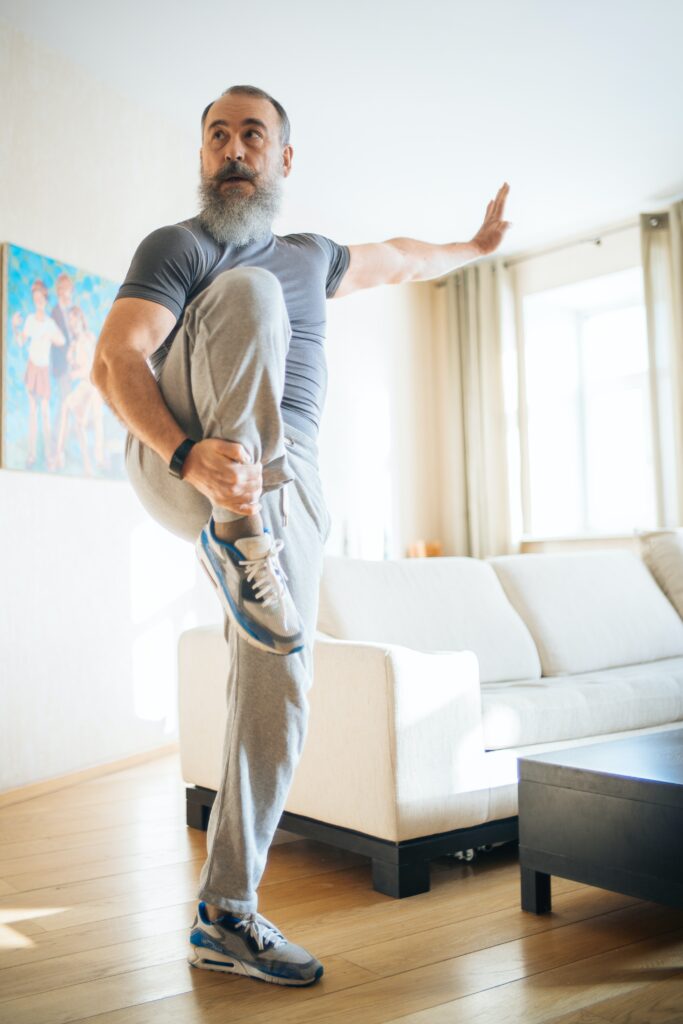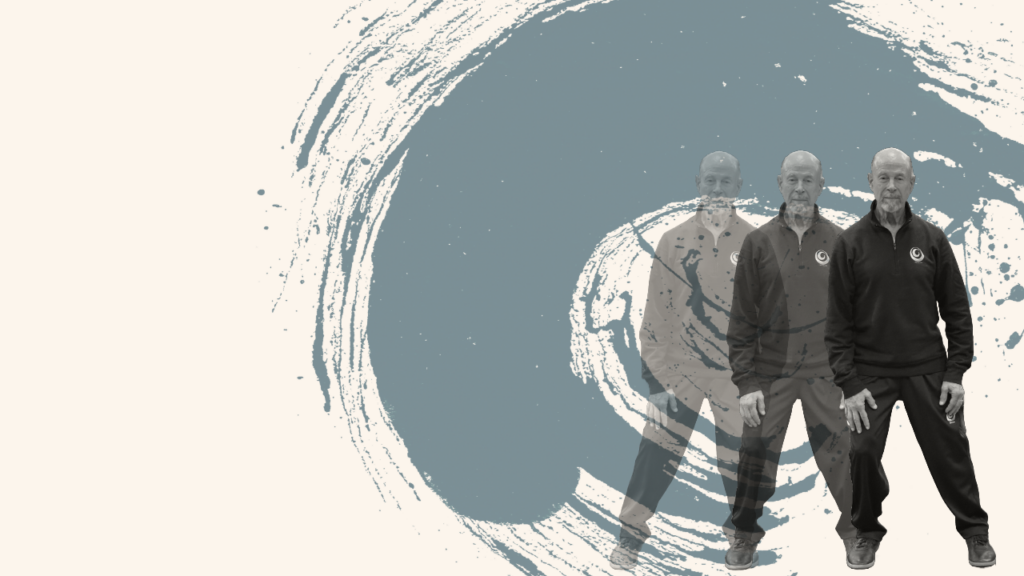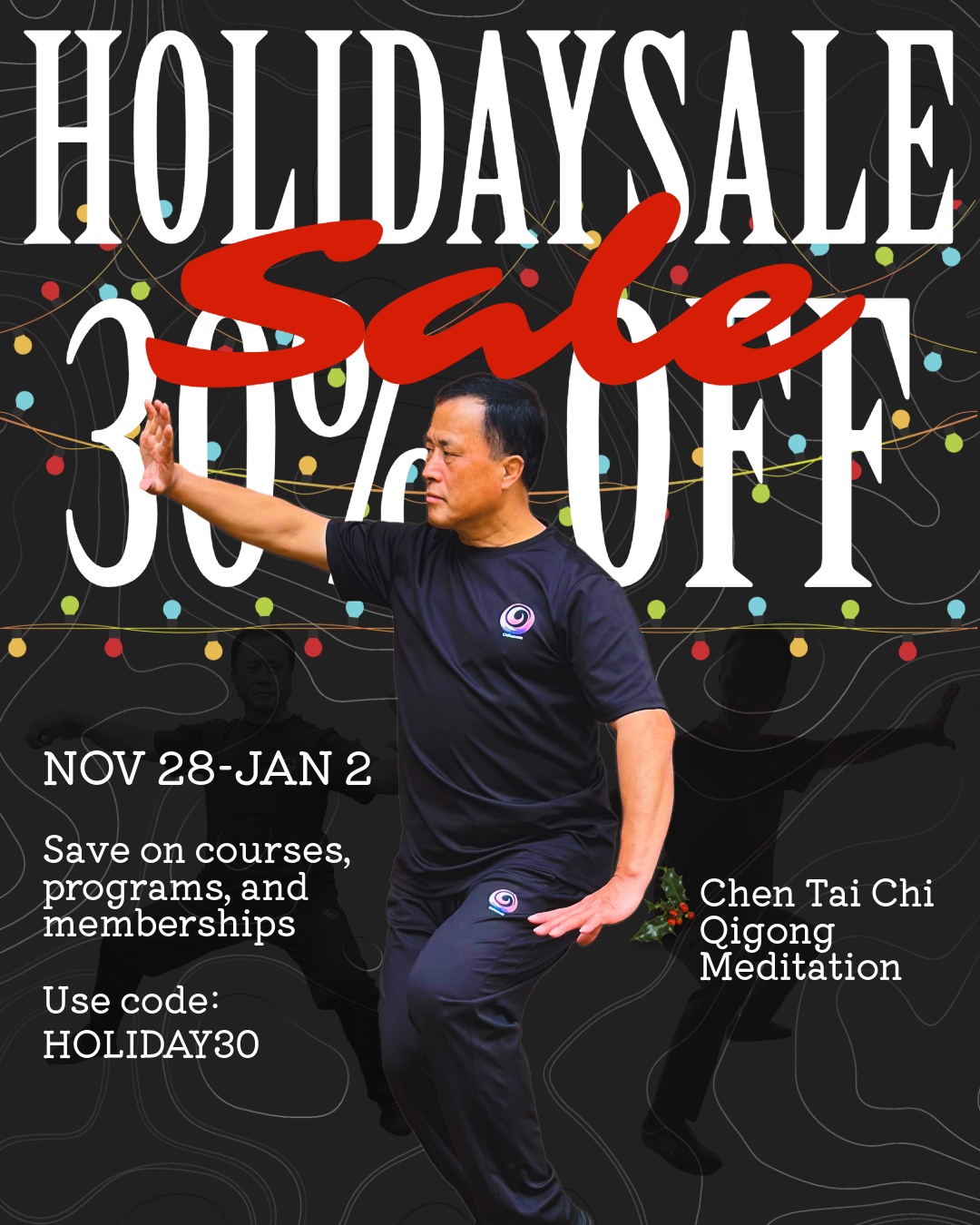Sit, Stand and Sit While Standing

In this age of computers, gadgets we never knew we needed, and social media, it’s hardly a wonder many people are becoming sedentary, less and less physically active. That’s not good. Our bodies change as we age, our tendons, ligaments and muscles become more brittle and stiffer, bone density decreases and blood flow lessens. That’s a sure pathway to advanced aging.
There are tons of advertisements out there for creams, lotions and dyes to disguise the aging process; there are vitamins, potions and plastic surgery offered to make us look younger, but none of these are actually geared to help you feel younger and slow aging.
So how do we prevent this? How do we slow down the aging process? The simple answer is to become more physically active. When we’re stuck home, we can’t get out and socialize the way we used to; yet there are still many things we can do to improve ourselves physically, mentally and even emotionally.
Here are some suggestions:
Walk
When the weather is good, take a walk around the block or find a local track to walk around. If you want company, invite a friend or two to join you, but be sure to incorporate safe practices such as wear a mask, and keep six feet apart.
If you can’t get out, set up a route in your home or apartment. Set a goal of 1, 2 or 15 laps around your in-door route. Make sure you do this for 5 to 15 minutes when possible. To liven things up, play some happy music as you walk.
Stretch and Twist
Here are two simple movements for stretching and twisting:
Stretch
- While standing, keep your head erect, don’t look down or up but stare straight ahead so that your head is level.
- Place your hands a little below your navel, palms facing up and interlace your fingers.
- Slowly move the interlaced palms up by rotating the palms out (away from you) and circle the arms up so that the palms face the ceiling and inhale deeply as you move the arms up.
- Press the palms up and push your feet down at the same time until you feel the stretch; this will stretch your arms, shoulders and legs.
- Unlock your fingers as you begin to circle your arms out and down towards your sides while pushing your palms out. Exhale slowly.
- Continue circling your arms out and down until they are at shoulder level.
- Continue to press your palms outward as if pushing the walls away, then circle the arms and palms back down to your starting position.
Twist
- Stand up straight, feet a bit wider than shoulder width, knees slightly bent, with your head erect, as if floating up.
- Place your hands on your hips.
- Twist your upper torso to the left, when you feel a natural stop, push a bit more and hold for 10 seconds, then gently twist to the right, when you feel a natural stop, push a bit more and hold for 10 seconds.
- Repeat 3 times each side.
Hop
This will generate energy and may be difficult for some people, so exercise extreme caution, in some cases, support yourself by touching a table top or a stable object near you to prevent you from falling:
With your feet close together but not touching, stand on your toes, hop up and down keeping your heels from touching the floor. Start with 30 hops, then 40. As you gain more balance and stamina, increase your hops by 10 until you are able to do 100 without stopping.
Stand While Sitting
This is a Tai Chi based exercise with many benefits. It will improve your leg strength, stamina, balance while at the same time help you relax and even meditate. It will give you a physical understanding of the concept of Yin and Yang. From your hips down you will be stable and strong (yin) while from your hips up, you will work on being relaxed and light (Yang). Learning this at first can be a challenge, but the end result will be well worth it.
Here’s what to do:
- Stand with your feet a bit wider than shoulder width and your head erect so that the head is flat, eyes facing forward, chin slightly down allowing the head to be level. The knees are slightly bent.
- Focus on your wrist joints and imagine there is a string attached to them. Now imagine you are a puppet and a puppeteer is gently pulling your wrists out and up until your arms are shoulder height.
- Now imagine you are about to sit in a chair: your knees are bent, you’re folding (bending) at the waist. Your hips are gently pushing forward (done correctly you’ll feel your quadriceps engaged). As you move into this “sitting” posture bend your elbows, rounding out your arms, turn your hands so that the fingers are facing each other and the palms are facing your chest. Imagine you are holding a large ball in your arms so that the fingers, palms and arms form a circle.
- Be sure the knees are positioned so that they are in line with the middle of your feet: front-back, left-right.
- Relax your shoulders. Often people tend to push their shoulders up or out, which causes tension. So, just let them drop and release any tension.
- Do not lean back or forward too much: the head is floating up, shoulders and hips are in line, knees and feet are centered (as above), shoulders relaxed.
- Breathe normally; do not force your breath.
- Stare straight ahead.
- Hold for 10 seconds then relax; repeat and try for 15 seconds. Repeat 3 times.
- As you get stronger, hold the position for 20 seconds, then 30 and eventually for a minute. Once you reach one minute, gradually increase the time until you can hold it for 5 minutes or longer.
Try Tai Chi Exercises
Often called meditation in motion, it could very well be referred to as medication in motion. Tai Chi movements have been around for hundreds of years and are proven to enhance both mind and body. Tai Chi is fun to learn and literally provides a lifetime of learning and growth opportunities for everyone. Tai Chi improves flexibility, balance, strengthens muscles, improves energy, mental awareness, has helped reduce neck and back pain and reduces stress.
These are gentle, low impact movements that can be performed anywhere and do not require special equipment. Practically anyone at any level of physical condition can learn Tai Chi as there are many types of movements to learn ranging from simple basic, to more complicated and challenging that can be adapted to the goals of the practitioner.
Where can you begin? We at Chi Force developed a series courses to meet the needs of any beginner. Why not start here?
About the Author: Alan Bandes has been teaching Chen Style Tai Chi for over 2 decades while studying under Master Ren Guangyi. He teaches in-person, and as an instructor for Chi Force Community where he offers live-streamed classes.







Responses